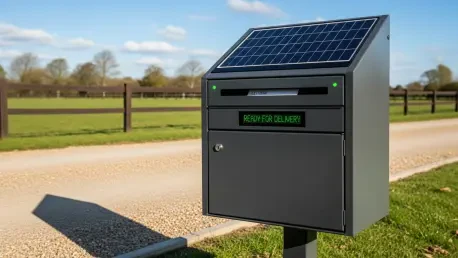I’m thrilled to sit down with Rohit Laila, a veteran in the logistics industry with decades of experience in supply chain management and delivery services. Rohit’s career has been defined by his deep understanding of parcel networks and his passion for integrating technology and innovation into logistics. Today, we’ll dive into the evolving landscape of parcel delivery, exploring how strategic partnerships are enhancing customer convenience, the impact of expanded networks for online marketplaces, and the role of cutting-edge solutions like solar-powered postboxes in shaping the future of the industry.
How did the partnership between Royal Mail and Vinted begin, and what has changed with its recent expansion?
The partnership initially focused on providing Vinted sellers with access to a limited network of lockers and parcel shops for sending items. It was a practical starting point, leveraging Royal Mail’s existing infrastructure to support the growing demand for second-hand fashion delivery. With the recent expansion, the collaboration has grown significantly, now offering both sellers and buyers full access to Royal Mail’s extensive pickup and drop-off network. This means a seamless experience for Vinted users, whether they’re sending or receiving pre-loved items, and it reflects a shared commitment to convenience and accessibility.
What does this expanded network look like for Vinted customers in terms of locations and options?
It’s a game-changer for Vinted users in the UK. They now have access to over 22,000 locations for sending and collecting parcels. This includes a mix of options like lockers, Collect+ Parcelshops, over 11,000 Post Office branches, and around 1,200 Royal Mail Customer Service Points. Having such a vast and diverse network means users can choose a location that fits their daily routine, whether it’s near their workplace, home, or even on their commute.
How does this level of access benefit buyers and sellers on platforms like Vinted?
The sheer number of locations—over 22,000—eliminates a lot of the friction that comes with online buying and selling. For sellers, it’s easier to drop off parcels at a nearby spot without needing to travel far. For buyers, picking up their purchases at a convenient location saves time and hassle. It lowers the barrier to entry for participating in the second-hand market, and I believe it encourages more people to embrace sustainable shopping by making the process so effortless.
Royal Mail has emphasized a commitment to convenience. Can you unpack what that means in practical terms?
Convenience is at the heart of Royal Mail’s strategy right now. They’re focusing on meeting customers where they are, whether that’s through home delivery or an ever-growing network of out-of-home locations. This includes expanding access to places like Post Offices and service points, which are often in central, easy-to-reach areas. They’re also investing in user-friendly tools, like app-based features, to streamline the process of sending and tracking parcels. It’s all about reducing the time and effort customers spend on logistics.
Speaking of innovations, can you tell us more about Royal Mail’s new features for sending parcels, like larger drop-offs through postboxes?
Royal Mail has introduced some clever updates to make sending parcels easier. One standout is the ability to send larger parcels through specially designed postboxes. These aren’t your typical small letter slots—they’ve been adapted with wider openings to accommodate bigger items, which is perfect for platforms like Vinted where package sizes can vary. Additionally, they’ve added a proof of posting feature via their app, giving users digital confirmation of their drop-off. It’s a small but impactful way to provide peace of mind, especially for sellers who want to ensure their item is on its way.
What’s the story behind the solar-powered postboxes Royal Mail is piloting, and how do they fit into the bigger picture?
The solar-powered postboxes are an exciting pilot program. These aren’t just regular postboxes with a green twist—they’re equipped with technology to handle larger parcels and provide digital proof of posting through the Royal Mail app. The solar power aspect makes them more sustainable, reducing reliance on traditional energy sources, while the enhanced functionality supports the growing demand for flexible delivery options. It’s a forward-thinking move that aligns with broader goals of efficiency and environmental responsibility in logistics.
What is your forecast for the future of parcel delivery networks and innovations like these?
I see parcel delivery networks becoming even more integrated and tech-driven in the coming years. We’re likely to witness further expansion of out-of-home solutions, with more lockers and drop-off points in everyday locations like grocery stores or transit hubs. Innovations like solar-powered postboxes or app-based tracking will become standard as companies strive to balance convenience with sustainability. The rise of e-commerce, especially in niche markets like second-hand goods, will push logistics providers to keep adapting, ensuring they meet customer expectations for speed, accessibility, and eco-friendliness. It’s an exciting time for the industry, and I’m eager to see how these trends unfold.









